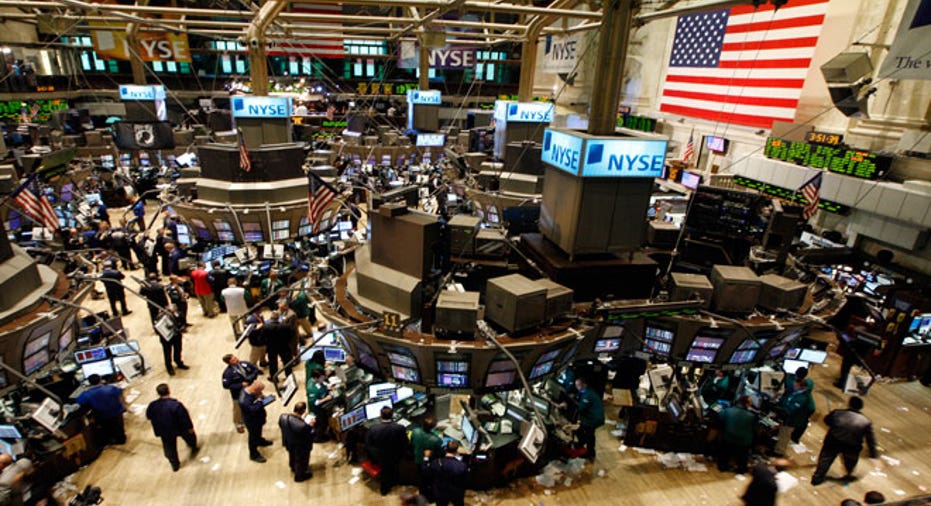'Theme' Investing: Just a fad or Here to Stay?

You've read about 3D printing and think a lot of money could be made in companies that make machines that manufacture products on the fly. Or you want to invest in specific emerging markets that have recently hit a wall because you think they'll recover in the next year or so.
Thematic investing, which entails purchasing a group of stocks based on a single theme, represents a viable way to structure a portion of your equity portfolio.
"You're trying to find powerful secular trends that are shaping the world -- things like genomics, robotics, the rise of the emerging market consumer," says Dan Roarty, a portfolio manager for global growth and thematic portfolios at AllianceBernstein.
"You're looking at long-term opportunities with the potential to impact companies across different sectors and geographies."
AllianceBernstein offers a thematic investing mutual fund -- the AllianceBernstein Global Thematic Growth Fund. It currently has seven themes, with five to 15 stocks per theme. Genomics and the rise of the emerging market consumer are two of the themes.
'Paint outside the lines'
While this fund is based on themes, many others are based on benchmarks, Roarty says. "The problem with a benchmark-sensitive strategy is it tells you a lot about yesterday's success," he says. The Standard and Poor's 500 index consists of many old-line companies, for example.
"A benchmark strategy can take investors in the wrong direction. We focus on what we think will be the success stories of tomorrow," Roarty says. "With thematic investing, you feel free to paint outside the lines. We free ourselves from having to invest so narrowly."
Thematic investing also has a low correlation with a lot of other investment strategies, he says. "This is a great diversifier within people's equity portfolios."
An anti-indexing strategy
Mick Heyman, a San Diego-based independent financial adviser, sees value in thematic investing. "It's something we all try to do, unless you're just indexing," he says. "It's not a bad idea to try, but don't feel your whole portfolio has to be invested a certain way. If you want to emphasize technology or solar energy, have a pocket of it."
As a rule of thumb, your maximum exposure to a single theme should be 20% to 25% of your stock portfolio, Heyman says.
Motif Investing, an online brokerage, focuses its business on thematic trading. It offers 135 ready-made motifs -- groups of up to 30 stocks and exchange-traded funds, or ETFs, built around different themes.
'7 deadly sins'
One of the motifs is "seven deadly sins." The sin of "gluttony" comprises shares of liquor, tobacco and fast-food companies, for example, and "greed" consists of bank stocks.
You can also set up your own motif with up to 30 stocks or ETFs. It costs $9.95 for either an established motif or one you set up yourself. That's one of the firm's main selling points, as it might cost you $300 to build a 30-stock portfolio at a typical online brokerage.
Lois Mayerson, a 76-year-old retiree living in Denver, likes the diversification and growth opportunities of thematic investing.
"I got out of mutual funds years ago because of the fees and expenses," Mayerson says. "And you have no control over when they buy and sell and no control over what's in the entity."
She has about 20% of her equity portfolio in thematic investing. At Motif, she holds 10 customized versions of the firm's motifs and six she established on her own. Among the ones Mayerson created for herself are motifs focusing on regional banks and the Internet.
The ideation process
How does Mayerson come up with her themes?
"I read a lot and listen to news and try to get an idea of where the world is going -- what I think is going to enrich people's lives, and how these entities fit into the pattern," Mayerson says.
Motif comes up with its ideas for themes partly on its own and partly based on customer ideas, says the firm's co-founder and CEO, Hardeep Walia.
Walia got into a debate once with a congressman over whether it pays to lobby in Washington. That provided the impetus for the "Kings of K Street" motif. It contains the stocks of companies that spend a large portion of their assets on lobbying. And perhaps their lobbying does pay: The motif returned 37% in the 12 months through May, versus 18% for the SandP 500.
Avoiding fads
At AllianceBernstein, "we want to make sure we don't invest in a fad," Roarty says. "There's a difference between a theme and a fad."
The firm seeks themes according to these criteria:
- The theme must have staying power.
- Companies are expected to earn profits reasonably soon.
- Companies are big and liquid enough that the firm can easily invest in them.
- The themes are "misunderstood or underappreciated," Roarty says.
As for returns, in the 12 months through May, the AllianceBernstein Global Thematic Growth Fund generated a return of 20%. Over five years, the fund grew 58%.
To be sure, not everyone is enamored with the idea of thematic investing. "It's part of the everyday process we all go through in selecting stocks," says Chris Litchfield, a retired hedge fund manager who's now a private investor in Greenwich, Connecticut. But that doesn't mean you have to buy a group of stocks associated with a theme, he says.
Copyright 2014, Bankrate Inc.